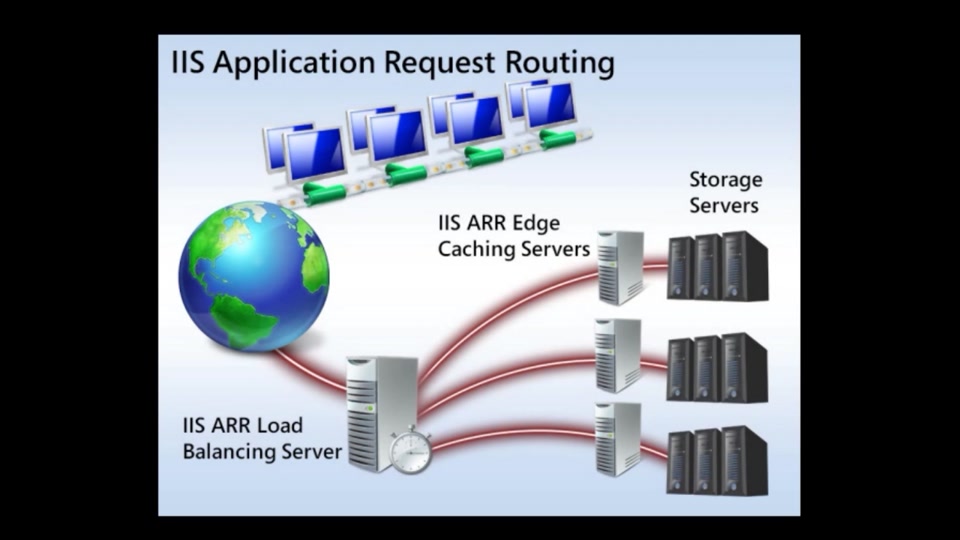Application Request Routing
Works With: IIS 7, IIS 7.5, IIS 8, IIS 8.5, IIS 10
Overview
IIS Application Request Routing (ARR) 3 enables Web server administrators, hosting providers, and Content Delivery Networks (CDNs) to increase Web application scalability and reliability through rule-based routing, client and host name affinity, load balancing of HTTP server requests, and distributed disk caching. With ARR, administrators can optimize resource utilization for application servers to reduce management costs for Web server farms and shared hosting environments.Balance loads more efficiently across servers to maximize resource utilization
IIS Application Request Routing offers administrators the ability to create powerful routing rules based on the URL, HTTP headers, and server variables to determine the most appropriate Web application server for each request. ARR makes request routing decisions at the application level, and can be used in conjunction with hardware load balancers or Windows Network Load Balancing as an added layer of control over HTTP requests. In addition, ARR enable hosting providers to route requests from clients to specific Web application servers in a server farm by creating an affinity between the client and server.
Manage and monitor multiple server farms more easily through IIS Manager
ARR lets administrators and hosting providers create, manage, and apply load balancing rules to server farms in IIS Manager. They can easily add or remove servers from a server farm to match demand throughput without impacting application availability. ARR also includes live traffic and URL test monitoring capabilities to determine the health of individual servers and configuration settings, while allowing administrators to view aggregated runtime statistics in IIS Manager.
Optimize bandwidth use and scale your server capacity through disk caching
ARR is able to cache on disk any HTTP traffic that passes through the server. By combining the disk caching capabilities along with a hierarchy of IIS Web servers running ARR, CDNs and hosting providers are able to considerably reduce the network traffic that traverses up to the origin server. This new feature makes it possible to use their primary HTTP network infrastructure to cache the content closer to the client and make the delivery more efficient, such as live and on demand video events in true HD quality (720p+) when combining the use of ARR and IIS Live Smooth Streaming.
Features
- HTTP based routing decisions built using rules that examine HTTP request information
- Sophisticated load balancing algorithms to determine appropriate servers to service the HTTP requests
- Health monitoring for live traffic and specific URLs to determine the health of servers with a set of configuration parameters provided to calibrate baseline server health
- Client affinity to direct all requests from a client to a specific server by using cookies.
- Host name affinity to streamline administration for Web servers and to create additional business opportunities.
- Management of multiple server farms to enable pilot management and A/B testing scenarios.
- Management and monitoring of all configuration settings and aggregated runtime statistics through IIS Manager interface.
- Support for Failed Request Tracing Rules
- Disk-based caching
- Cache hierarchy management
- Cache proxy node in CDN/ECN environment
- Caching compressed objects
- Browsing cached contents using IIS Manager
- Removing cached contents by matching URL patterns
- Overriding cache-control directives
- Warming up cache mode
- Intelligent byte-range support
- Intelligent live request support
- Caching while serving responses
Download ARR 3.0
Installing ARR 3.0 manually
ARR depends on URL Rewrite. Ensure URL Rewrite is installed prior to installing ARR.
